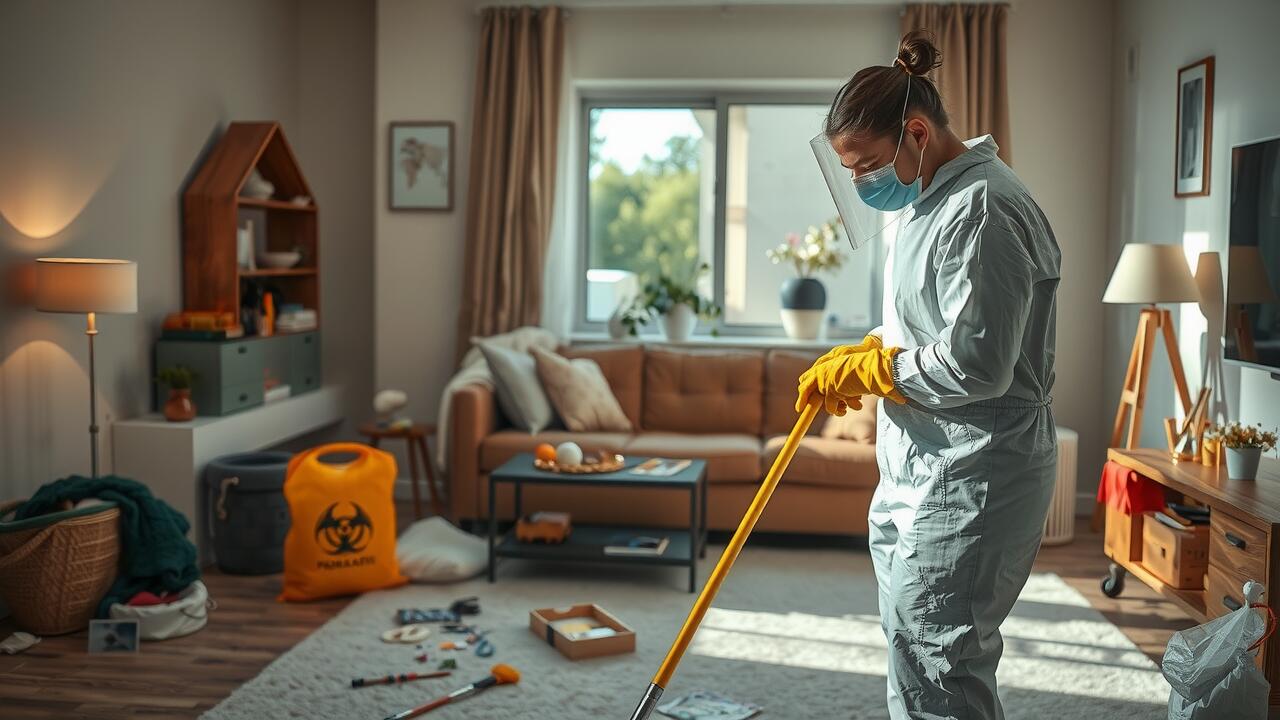
Steps to File an Insurance Claim for Cleanup
Filing an insurance claim for cleanup begins with gathering all necessary documentation. Start by taking photographs of the affected area to illustrate the extent of the damage. Collect any relevant police reports or incident reports that detail the crime or event leading to the need for cleanup. If you engaged a professional service for trauma cleanup in Reynoldsburg, Ohio, obtain their invoices and any correspondence related to the cleanup process. This evidence is crucial for substantiating your claim and will aid in expediting the review process.
Once you have compiled all required documentation, contact your insurance provider to initiate your claim. Provide them with the collected materials along with a detailed explanation of what happened and the response needed. The insurance company may require additional information or documentation, so be prepared for follow-up requests. Timeliness is important; delays in submitting your claim can affect approval. Keep track of all communications with your insurer, as this record may assist you throughout the claims process.
Documenting the Cleanup Needs for Submission
Documenting the cleanup needs is a crucial step in the insurance claim process. Begin by taking detailed photographs of the affected area, ensuring that all damage and evidence of the incident are clearly visible. These images will support your claim and provide a visual reference for the extent of the cleanup required. Create a list of items that need replacement or repair, including any personal belongings that may have been affected. This documentation serves to establish a comprehensive overview of the situation, helping the insurance company understand the scope of the cleanup.
If you are seeking specific services like Trauma Cleanup in Reynoldsburg, Ohio, be sure to include estimates from professional cleanup companies. Gather any relevant receipts or invoices from prior services related to the incident. Be thorough in your descriptions and keep records of all communications with both the cleanup professionals and your insurance provider. This organized approach will streamline the claims process and improve the likelihood of a successful submission.
What to Expect from Your Insurance Adjuster
When you file a claim for trauma cleanup, your insurance adjuster will play a crucial role in the process. They will evaluate the circumstances surrounding the incident and assess the associated costs for the necessary cleanup services. Expect them to ask for detailed documentation related to the scene, including photographs and invoices. This thorough evaluation helps determine the extent of coverage your policy provides, particularly in relation to trauma cleanup in Reynoldsburg, Ohio.
The adjuster will also communicate with the cleanup service you choose to facilitate the process. They may negotiate costs or clarify details to ensure that the services rendered align with your policy’s coverage. Their involvement can help streamline the communication between you and the cleanup company, allowing for more efficient coordination during what can be a challenging time. Understanding the adjuster’s responsibilities can assist you in navigating the claims process with greater ease.
The Adjuster’s Role in the Cleanup Process
Insurance adjusters play a crucial role in evaluating claims related to trauma cleanup, including situations that arise from violent crimes or severe accidents. Their primary responsibility involves assessing the extent of the damage and determining the necessary coverage for the cleanup process. When an adjuster arrives at the scene, they meticulously inspect the area to understand the specific needs for restoration and the potential costs involved. This thorough evaluation helps ensure policyholders receive fair compensation based on their insurance policies.
In the case of Trauma Cleanup in Reynoldsburg, Ohio, adjusters often collaborate with professional cleanup services to gather accurate estimates. They may also need to review documentation provided by the cleanup company, such as invoices or reports detailing the work required. By maintaining clear communication with both the policyholder and the cleaning professionals, the adjuster facilitates a smoother claims process. This collaboration is vital in expediting the approval of funds needed for a safe and effective cleanup.
Alternative Options If Insurance Does Not Cover
For those facing the financial burden of crime scene cleanup without the support of insurance, various alternative options can help alleviate costs. Local government programs may offer assistance or financial grants aimed at supporting victims in extraordinary circumstances. These resources can sometimes cover a portion or even all of the cleanup expenses, allowing families to focus on recovery rather than financial strain.
Community organizations may also provide assistance with trauma cleanup in Reynoldsburg, Ohio. Some non-profit groups specialize in offering support to individuals affected by violent crimes, including help with the costs associated with cleanup. Exploring these avenues can provide crucial aid during an already challenging time and ensure that the necessary cleanup is handled efficiently and respectfully.
Grants and Assistance Programs for Cleanup
For those facing the daunting task of crime scene cleanup without insurance coverage, there are various grants and assistance programs available. Local non-profit organizations often provide financial aid to families and individuals in need. These programs aim to alleviate some of the financial burden associated with trauma cleanup in Reynoldsburg, Ohio. By reaching out to community resources, one might discover additional support avenues.
Additionally, state-sponsored assistance can play a crucial role. These programs typically offer funding for victims of crime, covering necessary cleanup costs. Checking with local government offices can reveal options tailored specifically for residents of Reynoldsburg, Ohio. Engaging with these resources can help individuals navigate the aftermath of a traumatic event with more support.
FAQS
Does insurance typically cover crime scene cleanup costs?
Coverage for crime scene cleanup can vary based on the type of insurance policy you have. Homeowners insurance may cover cleanup costs if the incident falls under covered events, but it’s important to review your specific policy or consult with your insurance agent.
What steps should I take to file an insurance claim for crime scene cleanup?
To file a claim, start by documenting the incident and any related cleanup needs. Contact your insurance provider to report the claim and provide the necessary documentation, including photographs and any police reports, to support your case.
What role does the insurance adjuster play in the cleanup process?
The insurance adjuster is responsible for evaluating the claim, assessing the damages, and determining the extent of coverage. They will work with you to understand the situation and may visit the site to inspect the damages before making a decision.
What if my insurance does not cover crime scene cleanup?
If your insurance does not cover the costs, you may explore alternative options such as grants or assistance programs that provide financial aid for cleanup services. Local organizations and non-profits may also offer resources to help with these expenses.
How can I document the cleanup needs for my insurance claim?
Documenting cleanup needs can include taking detailed photographs of the affected areas, keeping records of any communications with law enforcement, and compiling a list of specific cleanup services required. This information will help support your insurance claim.
